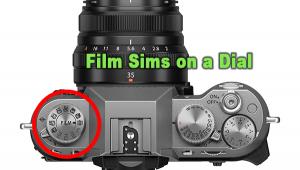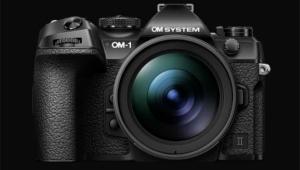photokina Special Coverage; Rangefinder Cameras: The Golden Age Is Upon Us
 This would appear to be a new golden age for rangefinder users. There are now three major systems (Leica, Voigtländer, and Zeiss) and two minor (Epson and Rollei). All use the same cross-compatible lens mount, for which an extensive and excellent range of lenses is available, and all compete with one another, albeit at different price points. Who could have imagined this even a decade ago?
This would appear to be a new golden age for rangefinder users. There are now three major systems (Leica, Voigtländer, and Zeiss) and two minor (Epson and Rollei). All use the same cross-compatible lens mount, for which an extensive and excellent range of lenses is available, and all compete with one another, albeit at different price points. Who could have imagined this even a decade ago?
The major news was the Leica M8, and rightly so. Making a digital camera feel like an M-series Leica was a remarkable achievement. If you are interested in Leicas, you've probably researched all this thoroughly by now; if you're not, here's the news: It's 10.3 megapixels, features Secure Digital storage, has shutter speeds of 1 second to 1/8000 sec, and a 1.33 magnification factor. The shutter speed dial goes the same way as the M6 TTL and M7, e.g., the right way for the meter but the opposite way to every other Leica ever built.
It's very slightly fatter and heavier than an M7, but it's a sort of plump sleekness, not the kind of morbid obesity we have grown to expect in the SLR market. As for reparability, Leica promises decades, not years: this is not a camera that will be obsolete and irreparable after a few years.
 |
|
|
There are also two new lenses, both of which can be used on film as well as digital bodies. These are a 16-18-21mm f/4 TRI-ELMAR (21-24-28mm equivalent) and a 28mm f/2.8 (38mm equivalent) aspheric "standard" lens. The former is truly astonishing, though also very expensive; it means that with just the two TRI-ELMARs, the Leica photographer can now have six focal lengths, 16-90mm.
The f/4 speed of the TRI-ELMAR is modest next to prime lenses, whether you are looking at the Zeiss 15mm f/2.8, Voigtländer's 28mm f/1.9 and 35mm f/1.2, or Leica's own 50mm f/1, 75mm f/1.4, and 90mm f/2 lenses, but it is fast next to most zooms and besides, most people find they can hold a rangefinder camera steady for at least one shutter speed longer than a reflex, making f/4 equivalent to at least f/2.8 (fast for a zoom) and arguably even f/2 (pretty fast for most lenses nowadays).
 |
|
|
Like all new M-fit lenses, the new TRI-ELMAR and 28mm f/2.8 ASPH are supplied with 6-bit bar coding on the lens mount. This transfers metadata and also allows native software to "tweak" the image to correct vignetting (more of a problem with older lenses designed for film) and possibly introduce other improvements. Many older lenses can be retrofitted with the bar coding; the advantage in doing so will vary from lens to lens.
To cap it all, literally as well as physically, there's a monster viewfinder for all focal lengths from 16-28mm, with manual frame selection and parallax compensation. It's very, very clever but it's also very, very big and fairly heavy and I'd prefer a smaller, lighter, single-length finder for any of the focal lengths not accommodated by the viewfinder: basically, anything wider than 28mm.
What none of this tells you is how desirable the camera is. Yes, it's expensive, but the price differential as against film Leicas is less than you might expect, about 30 percent more than the M7. In the US this will probably mean a street price, once initial demand has stabilized, of around $5000. A large part of this stems from the weakness of the dollar. When President Clinton left office, 4000 euros would have cost you under $4000, whereas today they would cost around $5500. Thus, do politicians and currency speculators price our cameras?
There was, however, another new rangefinder camera, inevitably from Voigtländer. Actually, you could say there were two, the Bessa R4M and R4A. As their names suggest, these are mechanical-shutter (M) and electronic/automatic-shutter (A) versions of the same camera. They look very similar to one another and to earlier M-mount rangefinder Bessas, and the only real difference (which is very significant indeed) is that the manually selected bright-lines in the viewfinder run from 21mm through 25mm, 28mm and 35mm to 50mm. Two sets are necessarily paired (21/35mm and 25/50mm) while 28mm is on its own.
 |
|
|
In other words, this is the wide angle Bessa par excellence. The downside is that the extremely small viewfinder magnification, about 0.52x, gives a correspondingly short effective rangefinder base, under 20mm. This is not really adequate to focus the 50mm f/1.5 at full aperture and at short distances, though it's fine with the 50mm f/2.5. Likewise, although the 75mm f/2.5 and 90mm f/3.5 couple perfectly adequately, focusing below (say) 3 meters/10 ft is marginal at full aperture.
- Log in or register to post comments

















































